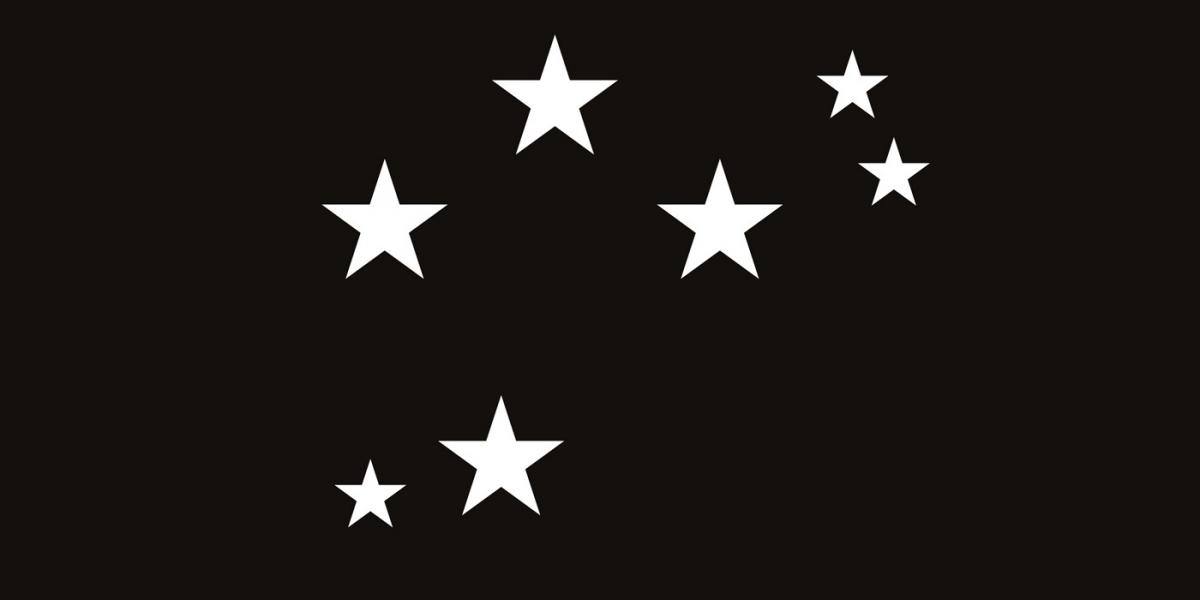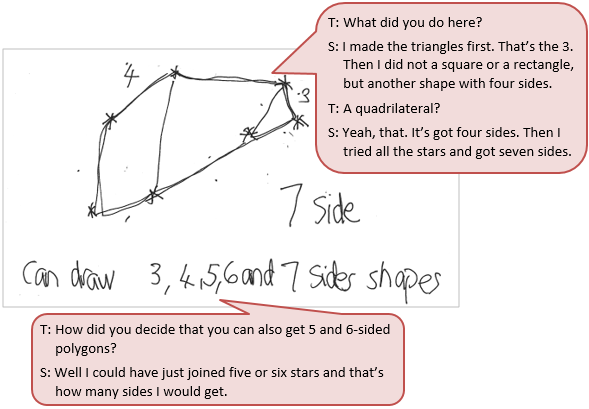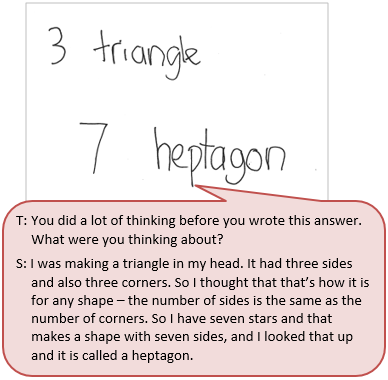The Seven Stars of Matariki
The purpose of this activity is to engage students in solving a problem involving sorting polygons by their spatial features.
This activity assumes the students have experience in the following areas:
- Naming common polygons and other 2-dimensional shapes.
- Sorting shapes by their features and properties.
- Identifying the properties of individual shapes, including symmetries, parallelism of sides, size and equality of angles.
The problem is sufficiently open ended to allow the students freedom of choice in their approach. It may be scaffolded with guidance that leads to a solution, and/or the students might be given the opportunity to solve the problem independently.
The example responses at the end of the resource give an indication of the kind of response to expect from students who approach the problem in particular ways.

Stella’s class is learning about polygons.
On the classroom wall is the flag design, the Seven Stars of Matariki.
Stella thought she might be able to make polygon pictures by drawing lines from one star to another.
If each star on the flag can be used for only one vertex (corner), but not all the stars need to be used, what are the different types of polygons that Stella could make?
The following prompts illustrate how this activity can be structured around the phases of the Mathematics Investigation Cycle.
Make sense
Introduce the problem. Allow students time to read it and discuss in pairs or small groups.
- Do I understand what is being asked? (Students need to realise that any star can be used as a corner and that sides are drawn to connect the starts.)
- Do I know what the words mean? (Address the meaning of words like line and polygon.)
- What are different types of polygons I know? (“Poly” means many and “gons” means angles.)
- What will my answer look like? (The answer will be a collection of polygons with their names.)
Plan approach
Discuss ideas about how to solve the problem. Emphasise that, in the planning phase, you want students to say how they would solve the problem, not to actually solve it.
- What maths ideas are involved in the problem? (Types of polygons, classification, symmetry, etc.)
- What do I already know about polygons? What types of polygons do I know about?
- What strategies might I use?
- How will I record my answer to help me find any patterns?
- What tools might be useful? (Copies of the Matariki cluster will be useful. Digital platforms for drawing shapes will give students opportunities for experimentation.)
- How will I know when I solve the problem? Will there be an end point to what I can do?
Take action
Allow students time to work through their strategy and find a solution to the problem.
- Have I tried drawing or making triangles of different types? What about quadrilaterals, pentagons, and hexagons?
- Is it possible to draw an octagon? Why not?
- Am I showing my workings in a way that helps me see patterns in the shapes?
- Are any shapes the same? How are they the same?
- What are the differences among my shapes?
- Can I group my shapes in any way? How?
Convince yourself and others
Allow students time to check their answers and then either have them pair share with other groups or ask for volunteers to share their solution with the class.
- What is my answer? Are the shapes all correct? Do I show how I drew each shape?
- How might I convince someone else that my shapes are correct?
- What types of shapes did I find? Have I found all the possible types?
- How do I know I haven’t missed any types of shapes?
- Can I group my shapes in different ways?
- Could I have solved the problem in a more efficient way? How?
- What could I find out next? What maths do I need to work on?
Examples of work
Work sample 1
The student draws many possible polygons, names them using mathematical terms, and explores the limits of shapes that can be formed.
Click on the image to enlarge it. Click again to close.
Work sample 2
The student creates two different polygons by recognising that the number of sides equals the number of vertices (corners).

